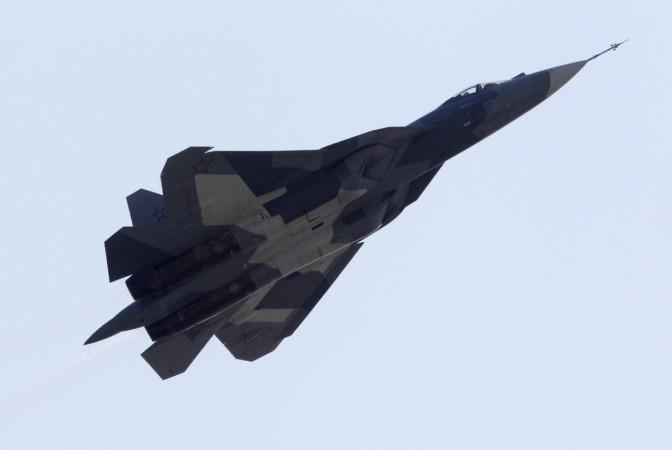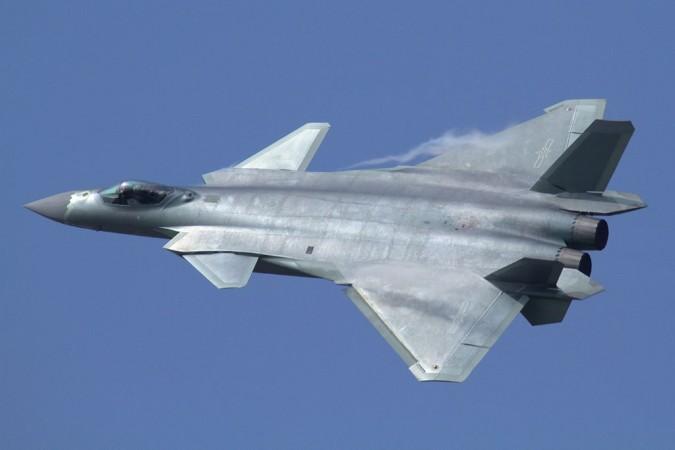
China is exploring the possibility of buying Russia's fifth-generation stealth fighter Sukhoi 57 (Su-57) following a sale offer from Moscow, media reports say. Su-57, which Russians call T-50, is the design basis of a medium multirole combat jet that Russian and Indian engineers have been working on with the apparent possibility of reverse incorporation of some of the features.
In the event of Peoples Liberation Army Air Force (PLAAF) inducting Su-57 aircraft into the force they could prove superior to Rafale multirole fighters that Indian Air Force (IAF) has contracted to buy from French plane maker Dassault. Rafale, whose purchase hit turbulence several times over corruption allegations, including those Congress party president Rahul Gandhi has raised against Prime Minister Narendra Modi and industrialist Anil Ambani, is a fourth generation fighter and is perceived a replacement for MiG-29 multirole fighters. India has contracted to buy 32 Rafale aircraft.
Russia has offered Su-57 to India also and some Russian experts consider them suitable more for India than China that has its own fifth-generation fighter in Chengdu J-20, according to a report in Beijing-backed Global Times website.
Engineers of India's public sector plane-maker Hindustan Aeronautics Limited (HAL) and Russia's Sukhoi began working on the prototype of FGFA, later renamed Perspective Multirole Fighter (PMF), in 2007 with Russian T-50 airframe as the basis but with 43 'improvements' that IAF sought. The new aircraft was to have better stealth and supercruise capabilities. Stealth features that include special material, surface geometry, and coating make it difficult for enemy radars to detect the aircraft. Supercruise refers to the capability of an aircraft to travel faster than sound at all altitudes and with all passenger and weapon loading.

Some reports in August last year, however, said that India was withdrawing from PMF because IAF was not impressed by the stealth and manoeuvrability of T-50 (Su-57). Later reports said India could rejoin the project once the sufficient number of Su-57 joined the Russian Air Force. Some say India may also have been upset with the delay in the development of Saturn izdeliye 3 engine being custom built for the aircraft. The aircraft now uses an upgraded version of Lyulka AL-31 engine that is in use on Su-27. The two countries had agreed to spend $6 billion each for the plane's development following the success of the BrahMos supersonic cruise missile.
Su-57's high stealth capability is attributed to the success of the incorporation of composite materials, a success that India's Aeronautical Development Agency (ADA) had achieved with Tejas light combat aircraft (LCA) programme.
Russian President Vladimir Putin once called T-50 the world's best military aircraft and is being inducted into the Russian Air Force. Russia sees the fighter as its answer to the US fighter aircraft maker Lockheed Martin's F-22 Raptor and F-35 Lightning II, the only two fifth-generation fighters currently in service. An export version of the aircraft Su-57E is expected to be unveiled at the 2019 Dubai Air Show scheduled in November.
Viktor Kladov, the director of international cooperation and regional policy at Russia's Rostec defence industrial holding company said during a briefing at the Langkawi International Maritime and Aerospace Exhibition in Malaysia that India and China were potential buyers of Su-57, according to Global Times.

Chinese defence analyst Wang Ya'nan, the chief editor of Aerospace Knowledge, believes India should more seriously consider Su-57 as China has its own stealth fighter programme.
Naming China as a potential customer, Kladov said, "China has recently taken delivery of 24 Su-35 aircraft, and in the next two years will make a decision to either procure additional Su-35s, build the Su-35 in China, or buy a fifth-generation fighter aircraft, which could be another opportunity for the Su-57E."
Global Times cited Xu Guangyu, a senior consultant at the China Arms Control and Disarmament Association, as saying that it is possible that China could make the purchase because China needs to study from other countries' strengths whenever possible. "Kladov's remarks are also an indication of cooperation in high-end military technology under the framework of the two countries' strategic cooperation," according to Xu.
However, Chinese defence analyst Wang said China is perfecting its own fifth-generation technology as the J-20 is on the way to being mass produced. During this period, integrating another fighter jet into the fleet could bring new challenges and disrupt development and training plans, he said.














